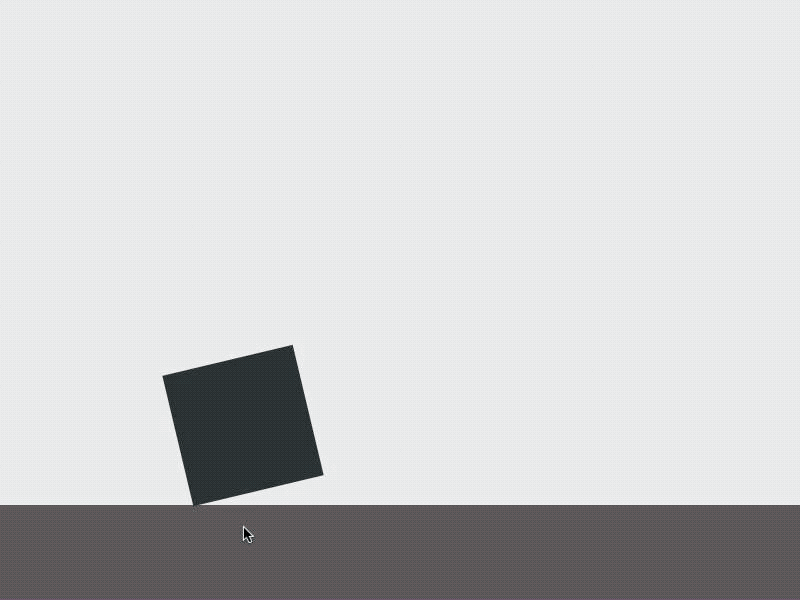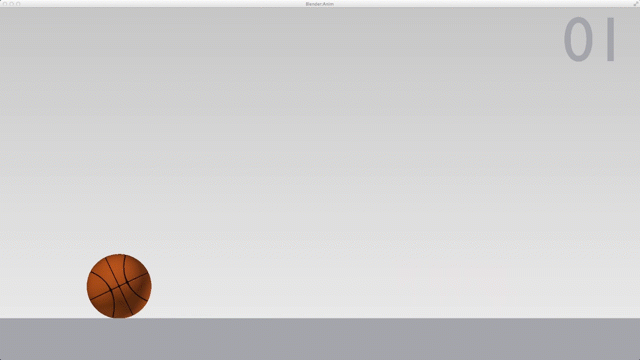Mathematically prove that a round wheel roll faster than a square wheel
Center of Mass
The center of mass of a uniform sphere/disc is located at the center of that sphere/disc (this might sound trivial, but this is only true for the cases where mass distribution is spherically symmetric). The center of mass can be viewed as a collective representation of the whole body by a single point (do note that this isn't strictly true, but for our purposes, it will help in building some basic intuition). Similarly, the center of mass of a uniform cube/square plate is at the center of the cube/square plate.
Gravitational Potential Energy
The gravitational potential energy of an object is given by
$$U=mg(h_{\text{COM}})\tag{1}$$
where $m$ is the mass of the body, $g$ is the gravitational acceleration and $h_{\text{COM}}$ is the height of the center of mass. In equation $(1)$, we have assumed the potential energy to be $0$ at the ground level i.e. $h_{\text{COM}}=0$. Now, to lift a body such that its center of mass moves form a height $h_1$ to a height $h_2$, we need to do some work which is equal to the change in body's potential energy:
$$W=\Delta U=mg(h_2-h_1)$$
Rolling Square
As you can see in the GIF below, the rolling square has a kind of wobbly rotational motion. Wobbly in the sense that its center of mass goes up and comes down, goes up and comes down, and on an on.

Animation source
So as we calculated above, we need to do some work to raise the height of the square's center of mass (There's a specific angle, $45^{\circ}$ in this case, up till which you need to rotate the square if you want it to roll. If you rotate the square by an angle less than that, then the square would fall back). And once the center of mass reaches the maximum height, it then falls to the other side on its own and the kinetic energy gained by the square during the fall gets dissipated as sound and heat energy due to the inelastic nature of collision of the square with the ground. Now you would again have to raise the square's center of mass up to make it roll. This process continuously involves giving energy to raise the center of mass and then losing the energy because of the square falling back to the ground. And this makes it really difficult for a square to roll.
Why does it undergo inelastic collisions?
The square is prone to lose more energy due to inelastic collisions when compared to a circular disc because of a larger area of the surface which is in contact with the ground. This is similar to the case of a bicycle tyre. When the tyre is inflated, it is spherical and thus has a lower are in contact with the ground resulting in lower energy loses, whereas a deflated tyre has a larger area in contact with the ground which makes it more prone to inelastic collisions.
Rolling Circle
When a circle/sphere rolls, the height of the center of mass stays the same throughout the motion because of the symmetry of the shape. You can also see this in the GIF below.

Animation source
This means that none of the energy that we provide, gets wasted in changing the height of the center of mass. And all of the energy is utilised in speeding up the sphere/circle, which makes us feel easy to roll it faster.
Why does its center of mass stay at the same height?
For the sake of rigor, let's prove that a circle is the only 2D shape which has the property that its center of mass stays at the same height when it rolls. First let's assume that there exists another shape (not a circle) which also has this property. This implies that no matter how you put that shape on the ground (of course, we can't just lay it flat), the center of mass will always remain at a constant height. Which means the distance between the ground and the center of mass will always be the same. Which then implies that the distance between the boundary point touching the ground and the center of mass will always be the same. However this is true for all boundary points, since all boundary points can be made to touch the ground (again we are assuming a convex shape). This implies that all the boundary points are at the same distance from the center of mass. This means that the boundary points lie on a circle which is centered at the center of mass of the body. And thus the desired shape can be nothing else than a circular disc.
Moment of Inertia
Moment of inertia also has a role to play here. It can be shown that for a given constant area of any 2D shape, a circular disc would have the lowest moment of inertia (assuming all the shapes to be made from same materials/density). This means it would be a bit easier to roll a circular disc than any other 2D shape. A similar argument holds for 3D shapes, however, here we would keep the volume (the 3D analogue of area) constant while varying the shape. But here, theoretically, a cylinder with an infinitesimally small radius and infinitely large length will have the lowest moment of inertia.
Addendum
For special surfaces, you can even make a square rotate like a sphere. See the GIF below.

Animation source
As you can see, if we use a surface which is made up of inverted Catenary curves, we can even make a square roll. To see why this is true, you can check out the derivation here.
Also, as this answer suggested, curves of constant width are also good candidates when it comes to rolling. So strictly speaking, circle isn't the only shape which can roll on a flat surface. However it is way better than a square when it comes to rolling.
In and ideal no-slipping condition, the ball keeps rolling forever after an initial kick or push. After it's rolling, You don't need to apply external force, you don't need any external energy.
The block can't keep rolling. In order for it to rotate, you need to lift the center of mass up by $\frac{\sqrt{2}-1}{2} a$ ($a$ is the length of a side), which requires $\frac{\sqrt{2}-1}{2} mga$ energy. After you rotate it 45 degrees it can topple to the other side, moving another 45 degrees. As the block hits the ground, it loses its kinetic energy to thermal energy and needs lifting again.
Energetically speaking, one needs no energy at all while the other needs a finite amount of energy every cycle. This is a difference between finite and none. As you mentioned, if you keep pushing them with the same force, the ball will keep accelerating. Trying to accelerate the block would be very frustrating. So in terms of velocity in the long run, they have a velocity difference of infinite(forget about Einstein for now) and finite.
How do you compare infinite and finite? How do you compare finite and none?
Let's say I have these equal size objects ...
First counterquestion: What does "equal size" mean?
- The diameter of the circle is the same as the edge length of the square
- The square and the circle have the same area
Mathematically prove that round objects roll faster
Even in the first 90 degrees where we don't have any collisions (see David Browne's answer) the circle is faster:
Let's assume that the edge length of the square is $a$.
Then the moment of inertia of the sqare rotating around its edge is:
$$J=(\frac16+\frac12)ma^2$$
The time needed for the square to rotate an angle of $\alpha$ can now be calculated as:
$$t^2 = \frac{2 \alpha J}{M} = \frac{4 \alpha ma^2}{3 M}$$
The symbols have the following meaning:
$$\begin{array}{ll} \alpha & \text{Angle of rotation} \\ J & \text{Moment of inertia} \\ M & \text{Torque} \\ m & \text{Mass of the square} \\ a & \text{Edge length of the square} \\ t & \text{Time needed for the rotation} \end{array}$$
Let's only look on the time needed for first 90 degrees of rotation - which means that the square moves the distance $a$:
$$t^2 = \frac{2 \pi}{3}\frac{ma^2}{M}$$
Now let's look at the circle with the same area as the square:
This means that the radius of this circle is $r=\frac{a}{\sqrt\pi}$.
The moment of inertia is $J=\frac32mr^2=\frac3{2\pi}ma^2$. The circle must rotate an angle of $\alpha=\sqrt\pi$ to move a distance of $a$.
So the time needed to move a distance of $a$ is:
$$t^2 = \frac{2 \alpha J}{M} = \frac3{\sqrt{\pi}}\frac{ma^2}{M}$$
And now we can compare the time needed:
$$\frac3{\sqrt{\pi}} < \frac{2 \pi}{3}$$
This means that the circle needs less time to roll a distance of $a$.